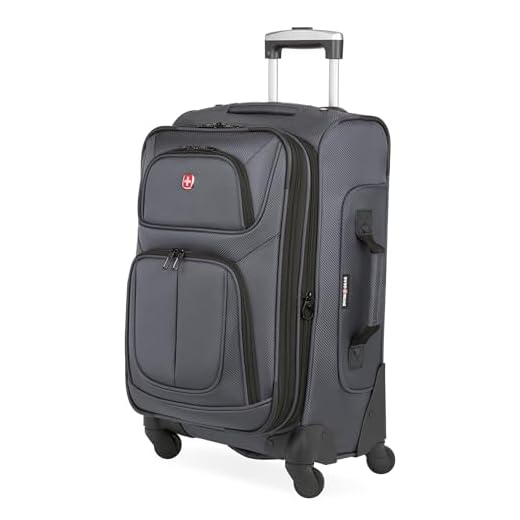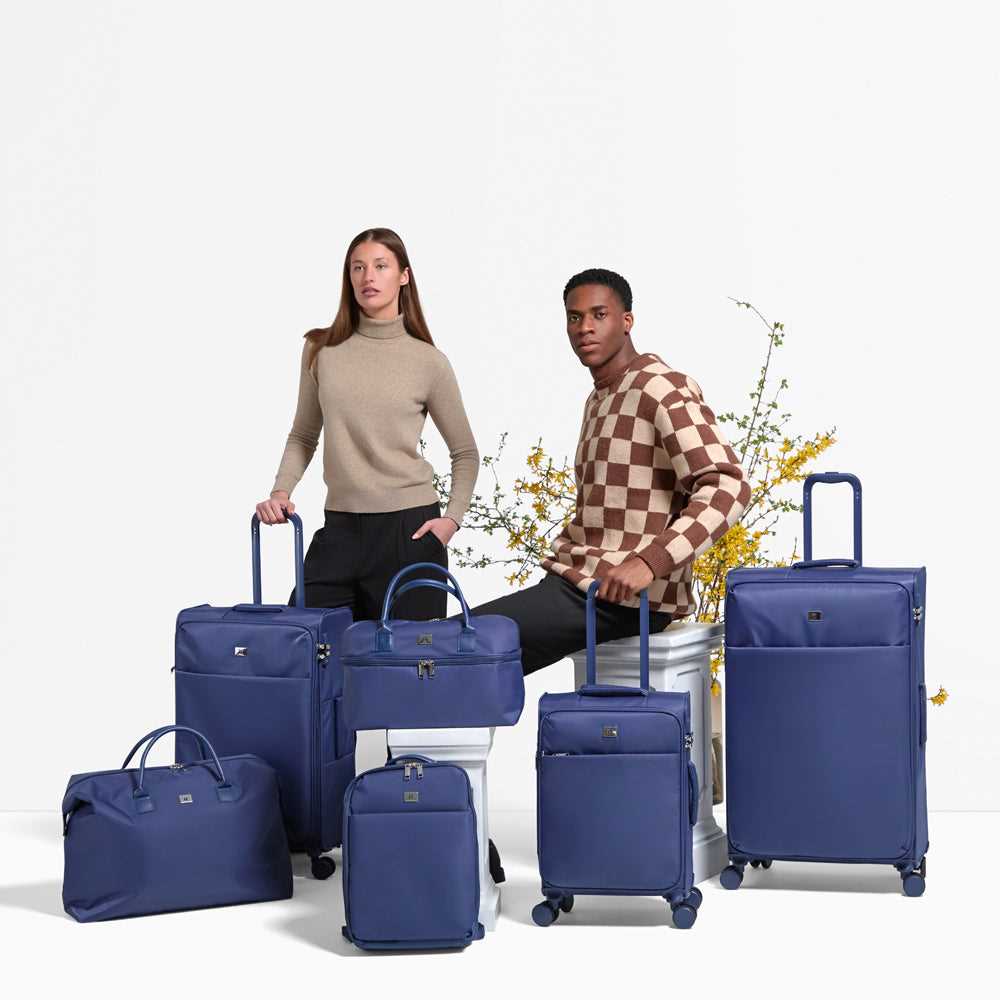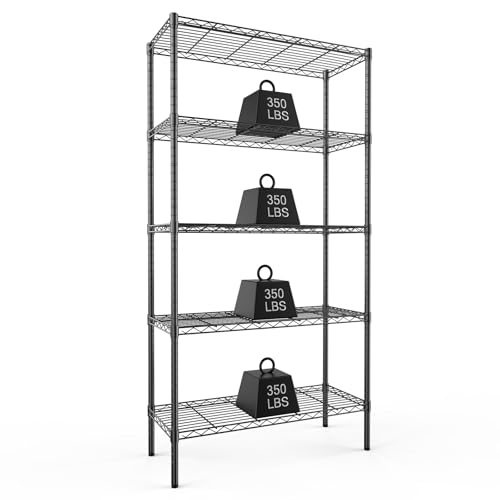




Look for lightweight, durable options that can withstand the rigors of frequent movement. Brands like Samsonite and Osprey offer excellent choices that combine functionality with style. This article provides insights on selecting appropriate bags, including backpacks, suitcases, and carry-ons tailored to varied travel needs.
Targeted towards individuals embarking on excursions abroad, this guide breaks down the key features to consider–such as size, weight, security, and design. It highlights specific models and includes user reviews to help streamline your decision-making process.
By the end of this piece, you will have a clear understanding of what types of bags suit different travel scenarios, from short trips to extended stays. Practical advice on packing techniques and organizational tools will also enhance your overall travel experience.
Best Luggage for International Student Travel
Choosing the right bag is fundamental for anyone studying abroad. A lightweight yet durable option is ideal, ensuring that it can withstand the rigors of frequent movement while remaining easy to carry.
Consider a design with multiple compartments. This feature aids in organizing essentials and separating items like clothing from electronics or documents, making access straightforward during transit.
Key Features to Look For
- Size: Opt for one that meets airline regulations to avoid extra fees.
- Weight: Lightweight materials help maximize packing capacity.
- Durability: High-quality materials resist wear and tear, ensuring longevity.
- Security: Built-in locks or zippers protect belongings from theft.
- Wheels: A 4-wheel design enhances maneuverability in crowded areas.
- Handles: An ergonomic handle reduces strain during long hauls.
- Water Resistance: Helps protect contents from unexpected weather conditions.
When packing, roll clothing to save space and minimize wrinkles. Use packing cubes to further organize items, allowing for quick retrieval without unpacking everything.
| Feature | Benefit |
|---|---|
| Expandable Sections | Allows extra space for souvenirs or additional items |
| Integrated USB Ports | Facilitates charging devices on the go |
Researching and selecting the right option will enhance the experience abroad, making it more manageable and enjoyable.
Choosing the Right Size for Your Needs
When selecting the ideal container for your belongings, size plays a significant role. It is essential to assess your requirements based on the duration of your stay, the climate of your destination, and the types of activities you plan to engage in. A well-chosen size will not only accommodate your essentials but also ensure convenience during your excursions.
For short trips, medium-sized options are often sufficient, allowing you to pack a few outfits, toiletries, and necessary items without overwhelming yourself. However, for extended stays or if you anticipate needing various clothing styles, larger options may be necessary. Also, consider whether you prefer a single spacious option or a combination of smaller pieces to enhance flexibility.
Assessing Your Packing Style
Understanding your packing habits is vital. Some individuals prefer minimalism, packing light with versatile clothing that can be mixed and matched. If this describes you, a compact size may suffice. Conversely, if you enjoy bringing along a variety of items, investing in a larger container could be more suitable.
- Short stays: A carry-on or small suitcase can be ideal.
- Week-long trips: A medium-sized option offers enough space without being cumbersome.
- Long-term relocation: A larger suitcase or multiple bags may be necessary to accommodate all your belongings.
Additionally, consider your mobility. An oversized piece can be burdensome in crowded areas or while using public transport. Assess the dimensions and weight when empty to ensure ease of handling.
| Trip Duration | Recommended Size |
|---|---|
| Weekend Getaway | Small (Carry-on) |
| One Week | Medium (Checked) |
| More than One Week | Large (Checked or multiple bags) |
Ultimately, assessing your unique needs will guide you in selecting the perfect size. A thoughtful choice can enhance your experience, making your time away more enjoyable and stress-free.
Durability: Materials That Last
Choosing robust materials is key to ensuring your travel gear withstands the rigors of frequent journeys. The most reliable options include high-denier nylon and polycarbonate, both known for their resilience against wear and tear. Such materials can resist impacts and abrasions, making them ideal for those who often find themselves navigating busy airports or rugged environments.
When selecting a bag, pay attention to the zippers and stitching. Heavy-duty zippers made from reinforced plastic or metal can prevent breakage and malfunction. Double-stitched seams add an extra layer of strength, ensuring that your belongings stay secure throughout your adventures.
Recommended Materials
- Ballistic Nylon: Known for its toughness, often used in military gear.
- Polycarbonate: Lightweight and impact-resistant, perfect for hard-shell designs.
- Kodra Fabric: Water-resistant and durable, ideal for unpredictable weather.
- Reinforced Polyester: Offers a good balance of durability and weight.
Consider the environmental factors as well. Water-resistant materials can protect your belongings from moisture, while UV-resistant fabrics help prevent fading from sunlight exposure. Investing in gear made from durable materials ensures that your equipment will last through multiple trips, providing a reliable companion on all your excursions.
Lightweight Options for Easy Mobility
Choosing a light and manageable bag can significantly enhance mobility during overseas experiences. Selecting pieces made from durable yet lightweight materials ensures convenience without compromising on strength.
When seeking a suitable option, consider designs that incorporate wheels and retractable handles. These features facilitate effortless movement, especially in crowded airports or train stations. Additionally, a well-organized interior with multiple compartments allows for efficient packing and quick access to essentials.
Key Features to Consider
- Material: Look for nylon or polyester blends that offer strength without bulk.
- Weight: Aim for items that are under a certain weight limit to maximize your carrying capacity.
- Size: Opt for dimensions that comply with airline carry-on regulations to avoid checked baggage fees.
- Wheels: Smooth-rolling, spinner wheels provide 360-degree maneuverability.
- Handles: Ergonomically designed handles ensure comfort during prolonged use.
Investing in a lightweight option not only streamlines movement but also enhances the overall experience abroad. Thoughtful selection can lead to greater enjoyment and less hassle during exploration.
Security Features: Protecting Your Belongings
Choosing a bag with robust security features is critical when traveling across borders. Look for items equipped with lockable zippers, which can deter casual theft and provide peace of mind during transit. Additionally, consider models that include built-in combination locks, offering an added layer of protection for your possessions.
Another important aspect to evaluate is the material used in the construction. Durable fabrics with anti-slash technology can significantly reduce the risk of theft. Additionally, water-resistant materials protect belongings from unexpected weather conditions, ensuring that electronics and important documents remain secure.
Smart Features
Integrating smart technology can enhance security. Some options come with GPS tracking systems, allowing you to monitor the location of your belongings through a mobile app. This feature can be invaluable if your bag goes missing during travel.
- RFID-blocking compartments: Protect sensitive information on credit cards and passports from unauthorized scanning.
- Integrated alarm systems: Certain bags emit a loud sound if tampered with, alerting you to potential threats.
- Expandable compartments: While not a security feature per se, they help manage space effectively, reducing the temptation to overpack and leaving valuables more organized.
When assessing options, prioritize those that offer a combination of these features to create a comprehensive security plan. Investing in quality protection can safeguard your belongings and grant peace of mind throughout your adventures.
Affordability vs. Quality: Finding the Balance
Choosing the right bag involves weighing cost against durability. An economical option might seem attractive, but it’s essential to evaluate whether it can withstand the rigors of frequent transit. Examine materials and construction details. A well-constructed piece can save money in the long run by avoiding the need for replacements.
Consider the frequency of use and the types of trips planned. For those with a busy schedule of moving between locations, investing in a higher-quality item can provide peace of mind. Look for features like reinforced handles, sturdy zippers, and weather-resistant fabrics. Assessing these aspects can help strike a balance between affordability and longevity.
Key Factors to Consider
- Material Quality: Look for durable fabrics such as ballistic nylon or polycarbonate that offer better resistance to wear and tear.
- Warranty: A solid warranty can indicate confidence in the product’s durability, often justifying a higher price.
- Weight: Lightweight options are crucial for avoiding excess baggage fees, but ensure they are not flimsy.
- Storage Capacity: Evaluate size based on travel duration; a compact option may be more cost-effective for shorter trips.
In summary, balancing affordability and quality requires careful consideration of individual needs and travel habits. Investing in a reliable option can lead to greater satisfaction and fewer hassles in the long term.
Extras: Compartments and Organizational Features
Opt for bags that offer a variety of compartments and organizational features to maximize packing efficiency. These elements enhance accessibility and help keep items secure during transit.
Look for designs with the following attributes:
- Multiple Pockets: Internal and external pockets allow for easy separation of essentials, such as travel documents, electronics, and toiletries.
- Expandable Sections: Some models provide expandable areas, perfect for accommodating extra items without sacrificing structure.
- Compression Straps: These help to minimize bulk and secure contents, preventing shifting during movement.
- Dedicated Laptop Compartment: A padded section specifically for tech devices protects them and offers quick access at security checkpoints.
- Water-Resistant Materials: Protects belongings from unexpected weather changes, ensuring items remain dry and intact.
Consider your travel habits and choose a bag that includes these organizational features to enhance your experience. Proper organization not only streamlines packing but also makes retrieving items hassle-free throughout your travels.
Best luggage for international student travel
Features
| Part Number | A82-F01D-DE |
| Model | T66M1D1 |
| Color | Black |
| Is Adult Product | |
| Size | 40L |
Features
| Part Number | 6283424161 |
| Model | 6283424161 |
| Warranty | 10 Year Limited |
| Color | Dark Grey |
| Size | Carry-On 21-Inch |
Features
| Part Number | LN20164-24-BL |
| Model | LN20164-24 |
| Color | Black |
| Size | Medium Checked |
Features
| Color | Black |
| Size | 14.1 x 8.8 x 21 inches |
Features
| Part Number | T33M1D1 |
| Model | T33M1D1 |
| Color | Black |
| Size | 3.5L |
Features
| Part Number | 78257-1041 |
| Model | 78257-1041 |
| Color | Black |
| Is Adult Product | |
| Size | Checked-Large Spinner |
Features
| Part Number | VC-TA-L-BLU |
| Model | VC-TA-L-BLU |
| Color | Navy |
| Size | Carry-on 22 Inch |
Video:
FAQ:
What features should I look for in luggage as an international student?
When selecting luggage, international students should prioritize durability, lightweight materials, and ample storage space. A suitcase with sturdy wheels and a comfortable handle can make transportation easier, especially in busy airports. Additionally, consider luggage with multiple compartments for organization and security features like locks. Waterproof materials can also be beneficial in unpredictable weather conditions.
Are there specific brands recommended for student travel luggage?
Several brands are known for their quality and student-friendly prices. Samsonite is popular for its durability and warranty options. American Tourister offers a variety of colorful designs that appeal to younger travelers. For budget-conscious students, brands like AmazonBasics or Coolife provide functional options without breaking the bank. Reading reviews and comparing features can help find the right fit for individual needs.
What size of luggage is best for international travel as a student?
The optimal size for luggage often depends on the length of stay and the airline’s baggage restrictions. A carry-on size (typically around 22 inches) is ideal for short trips, allowing students to avoid checked baggage fees. For longer stays, a checked suitcase (24-28 inches) may be necessary. It’s wise to check the specific airline regulations to ensure compliance and avoid additional costs.
How can I pack efficiently for international travel as a student?
Packing efficiently is key for students traveling abroad. Start by making a list of essentials to avoid overpacking. Roll clothes instead of folding them to save space and reduce wrinkles. Use packing cubes to keep items organized. Don’t forget to leave some space for souvenirs or items you may acquire during your travels. Additionally, pack a small bag with important documents and a change of clothes for easy access during transit.










